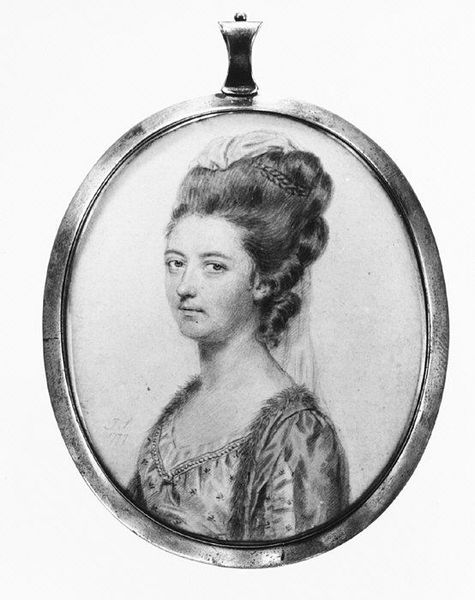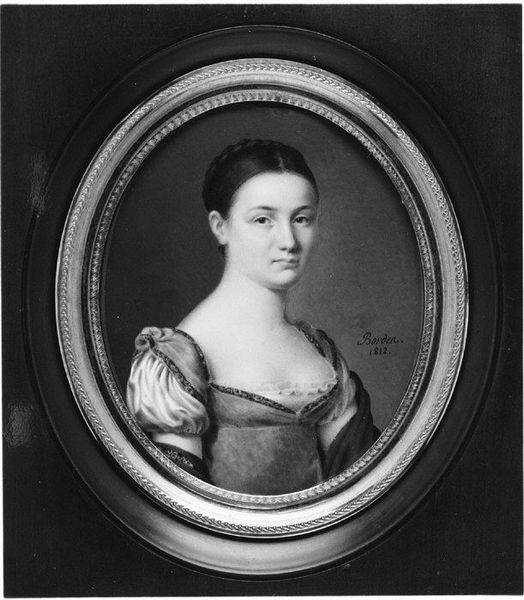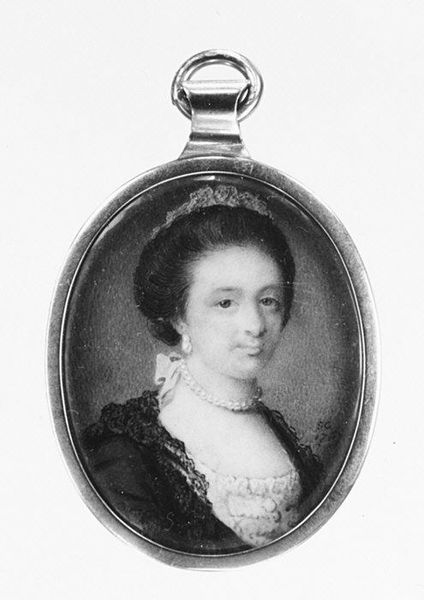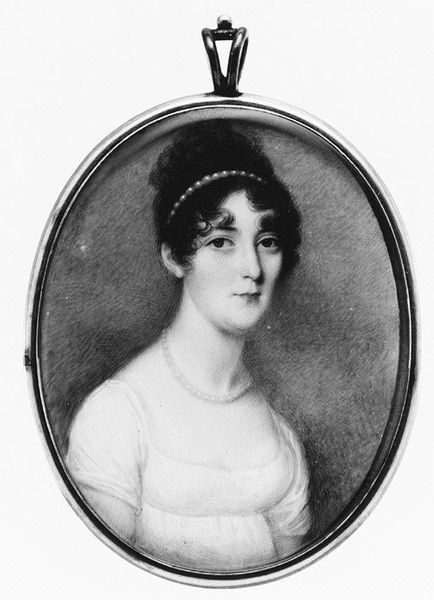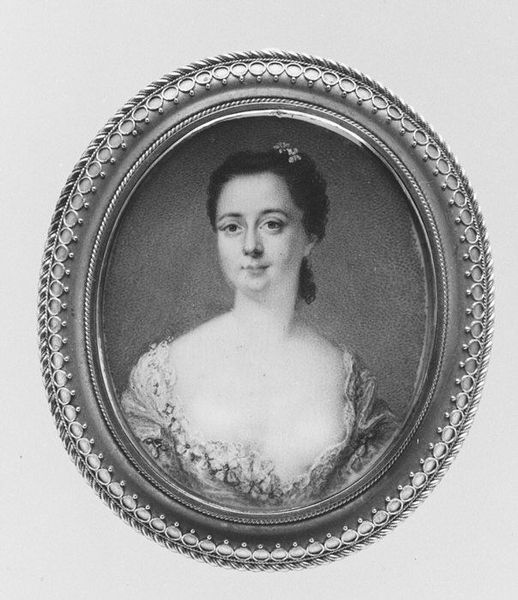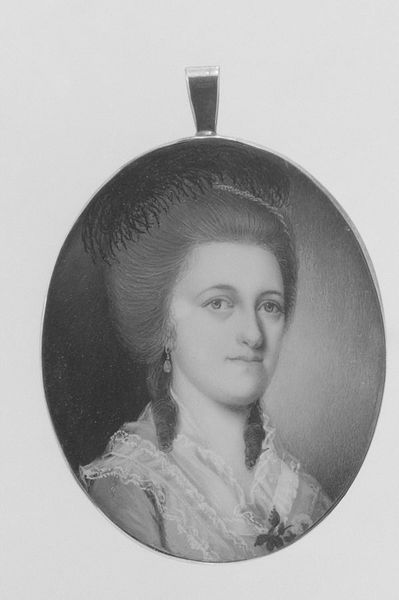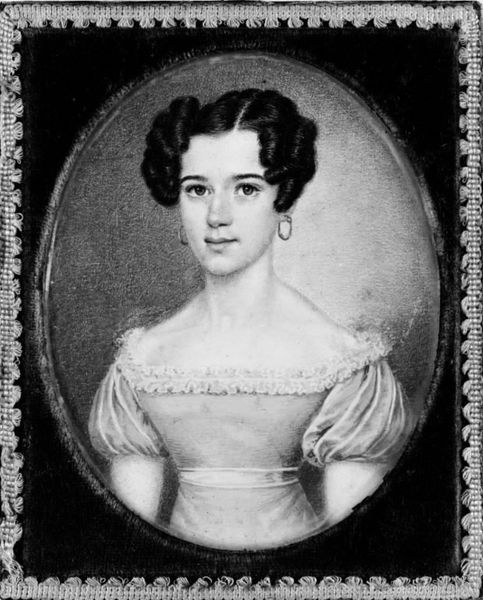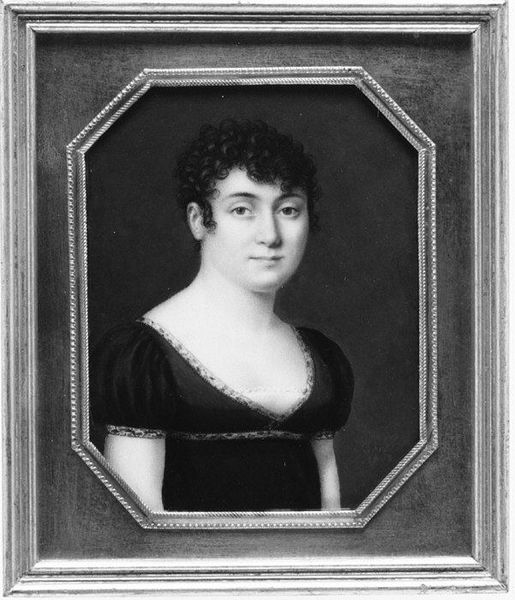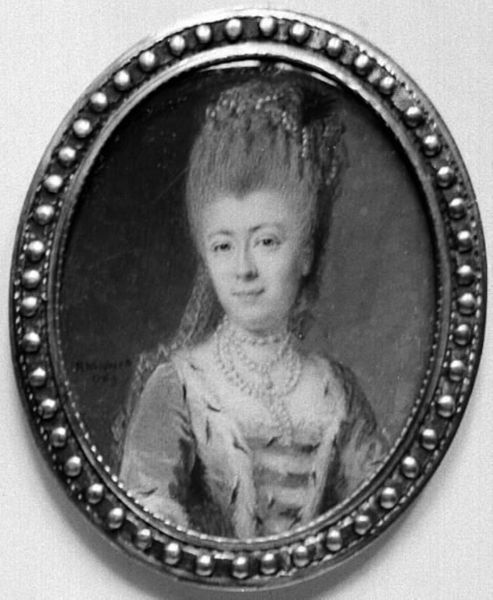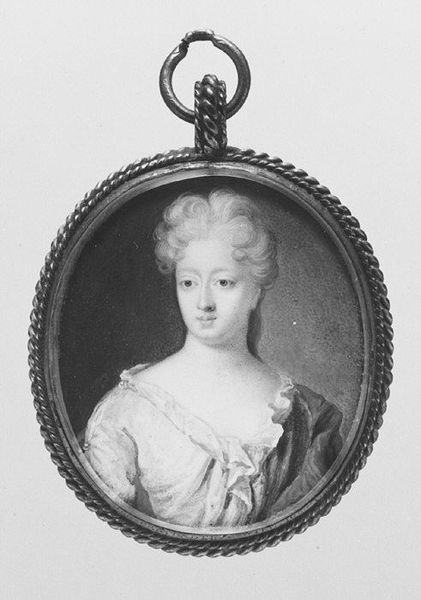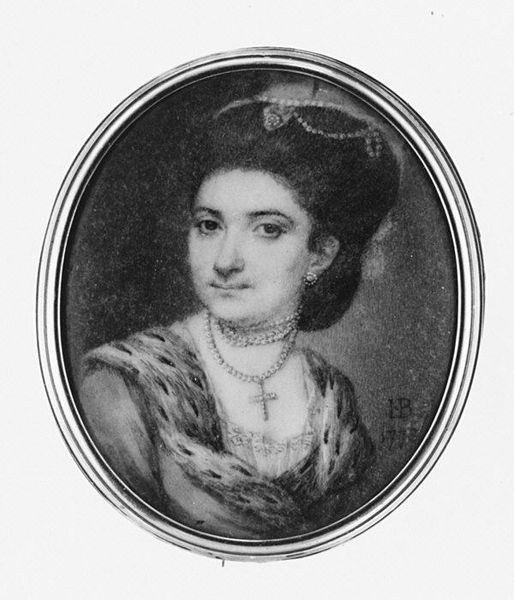
drawing, oil-paint, paper
#
portrait
#
drawing
#
neoclacissism
#
black and white photography
#
oil-paint
#
figuration
#
paper
#
black and white
#
miniature
Dimensions: Oval, 1 5/8 x 1 1/4 in. (40 x 34 mm)
Copyright: Public Domain
Editor: Here we have a miniature portrait, called "Portrait of a Woman", dating back to 1770-1773. It's oil on paper, and something about her gaze feels very self-possessed. What can you tell us about this portrait within its historical context? Curator: It's important to recognize how portrait miniatures functioned in the late 18th century. Beyond their aesthetic value, they served as symbols of social status and personal connection, a means of circulating images within a select circle, shaping public perception, particularly within the burgeoning culture of celebrity. It reflects the cultural elite. Does knowing that impact how you view the portrait? Editor: Absolutely. The intimate scale now reads as almost secretive, hinting at the power dynamics and the elite circles of the time. Did the subject have a say in how she was portrayed, or was that entirely in the artist's hands? Curator: A fascinating question. While the artist certainly had technical skill, portraiture during this period was heavily influenced by the patron. How the subject wished to be perceived played a pivotal role, as did their position within society. The emphasis on refined features, elegant attire, it's all carefully constructed imagery reflecting social ideals. These weren't neutral depictions. They communicated very specific messages. Editor: That definitely adds another layer to my understanding. It's less about individual likeness and more about societal performance. Curator: Exactly. Consider it part of the broader visual language through which the aristocracy maintained and reinforced its position. So what's your takeaway after looking more closely at the portrait and that societal framework? Editor: It makes me consider who controlled visual narratives, how limited access to portraiture impacted notions of beauty and status, and its overall place in solidifying socio-political structures of that era. Thank you.
Comments
No comments
Be the first to comment and join the conversation on the ultimate creative platform.
